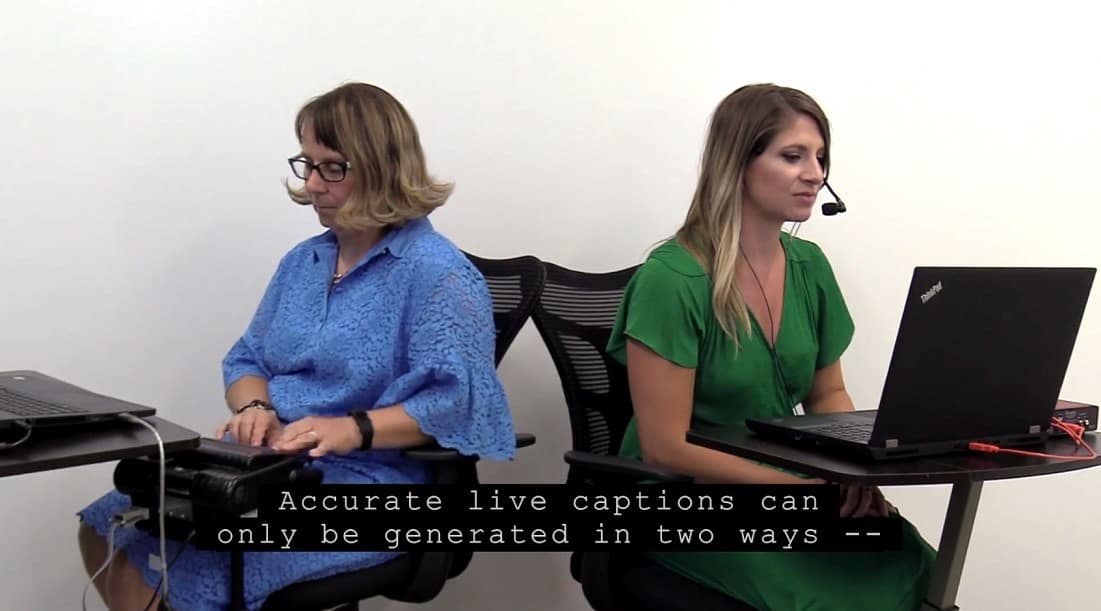Television is fast.
In an effort to keep the viewer’s attention, programs quickly cut from scene to scene, commentator to commentator, and person to person, with dialogue flying a mile a minute. It’s a wonder that anyone is able to keep up and understand everything that’s being said.
Now imagine translating that audio into text, in real time, for an audience of more than 50 million Americans in the deaf and hard-of-hearing community, as well as those who choose to watch content without sound. People who rely on that text for their news, entertainment, and other critical information to keep them connected and informed about the world around them.
This is the job of a highly skilled set of professionals — realtime captioners.
Accurate, live captions can only be generated in two ways — by a steno captioner or a voice writer.
The short VITAC-produced video below looks at how live, realtime captions are created, and the work involved in bringing captions to the screen, whether it be television, tablet, computer, or mobile phone.
Click here for more information on VITAC and the wide variety of accessible solutions and services we offer.




